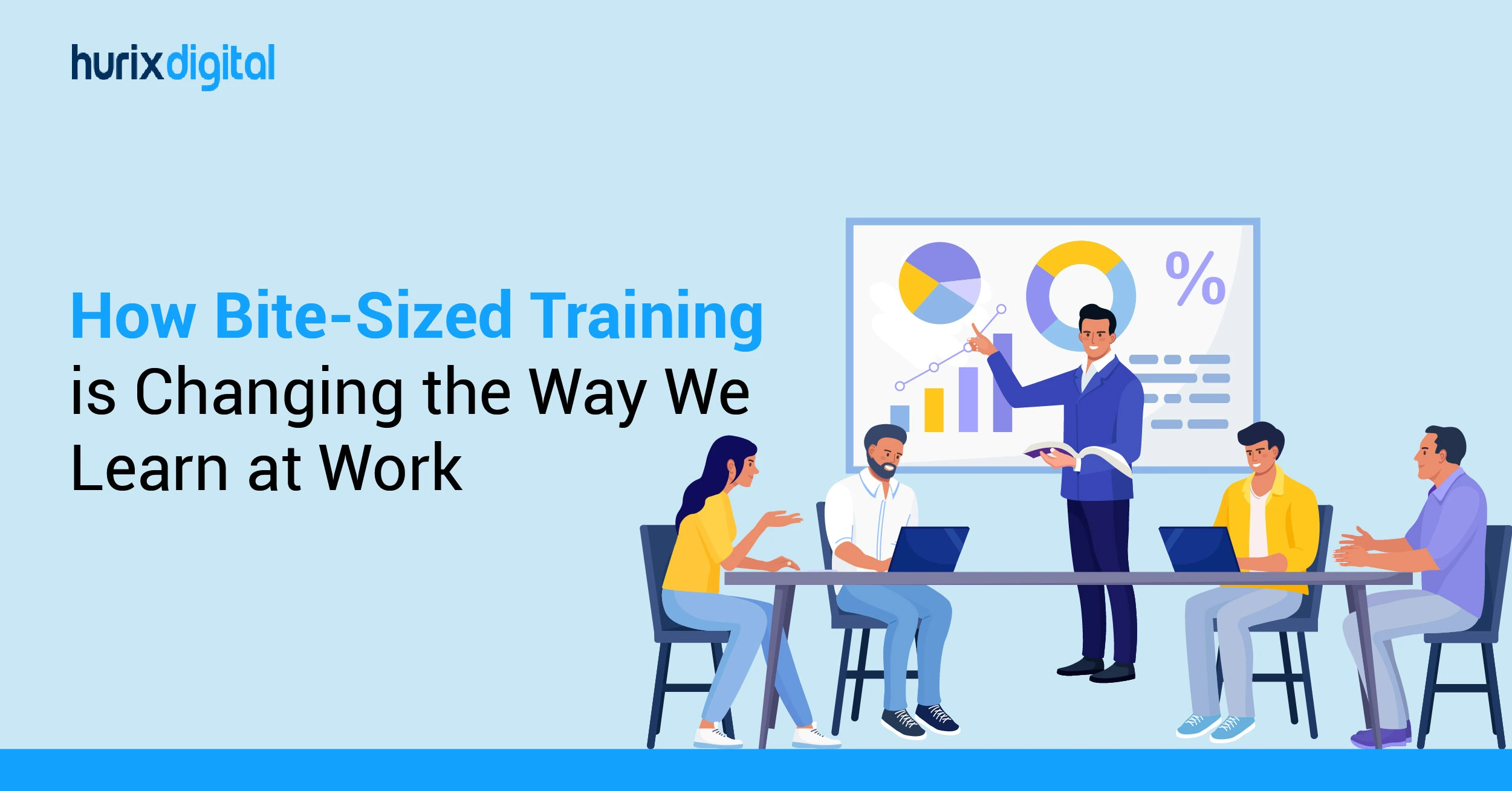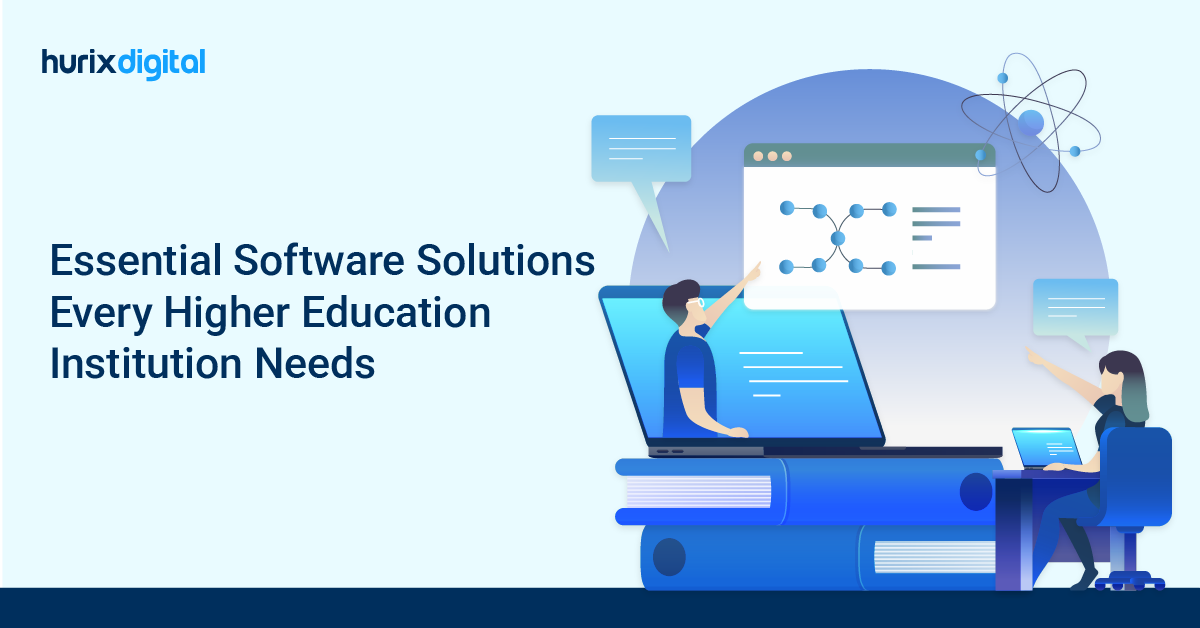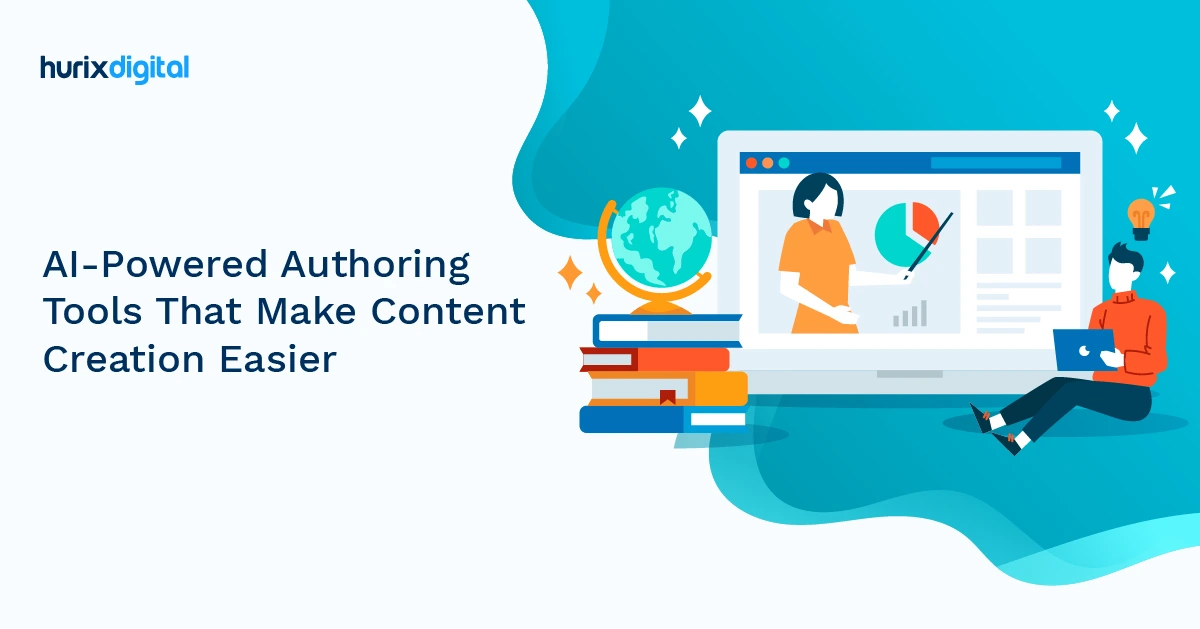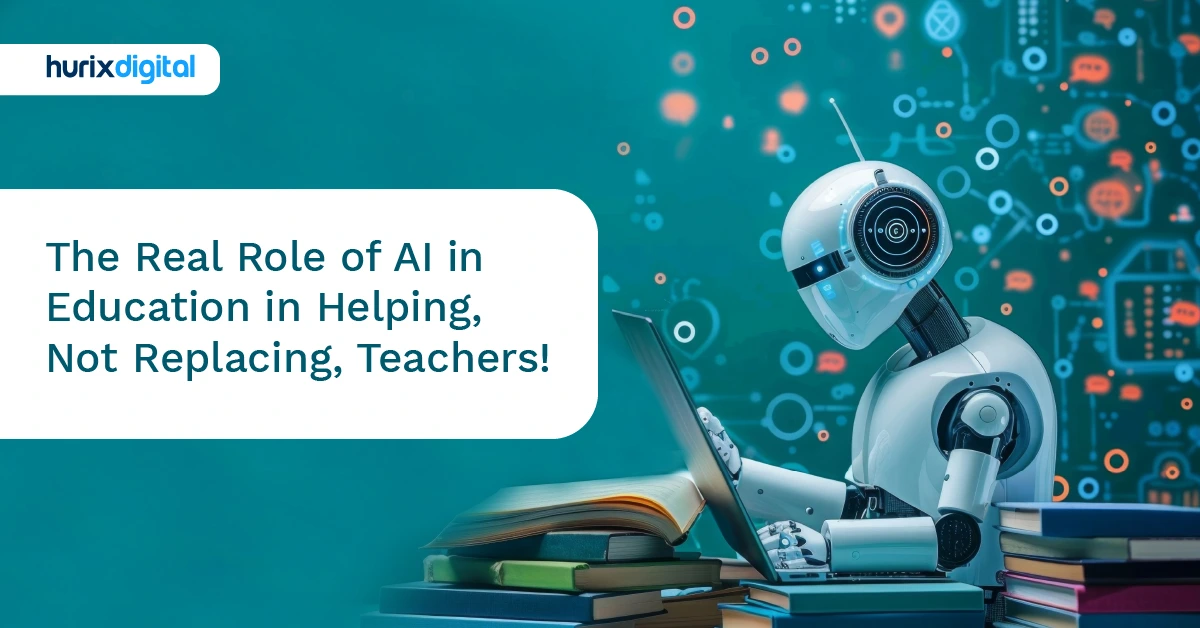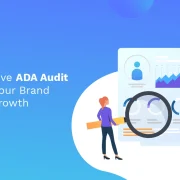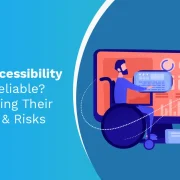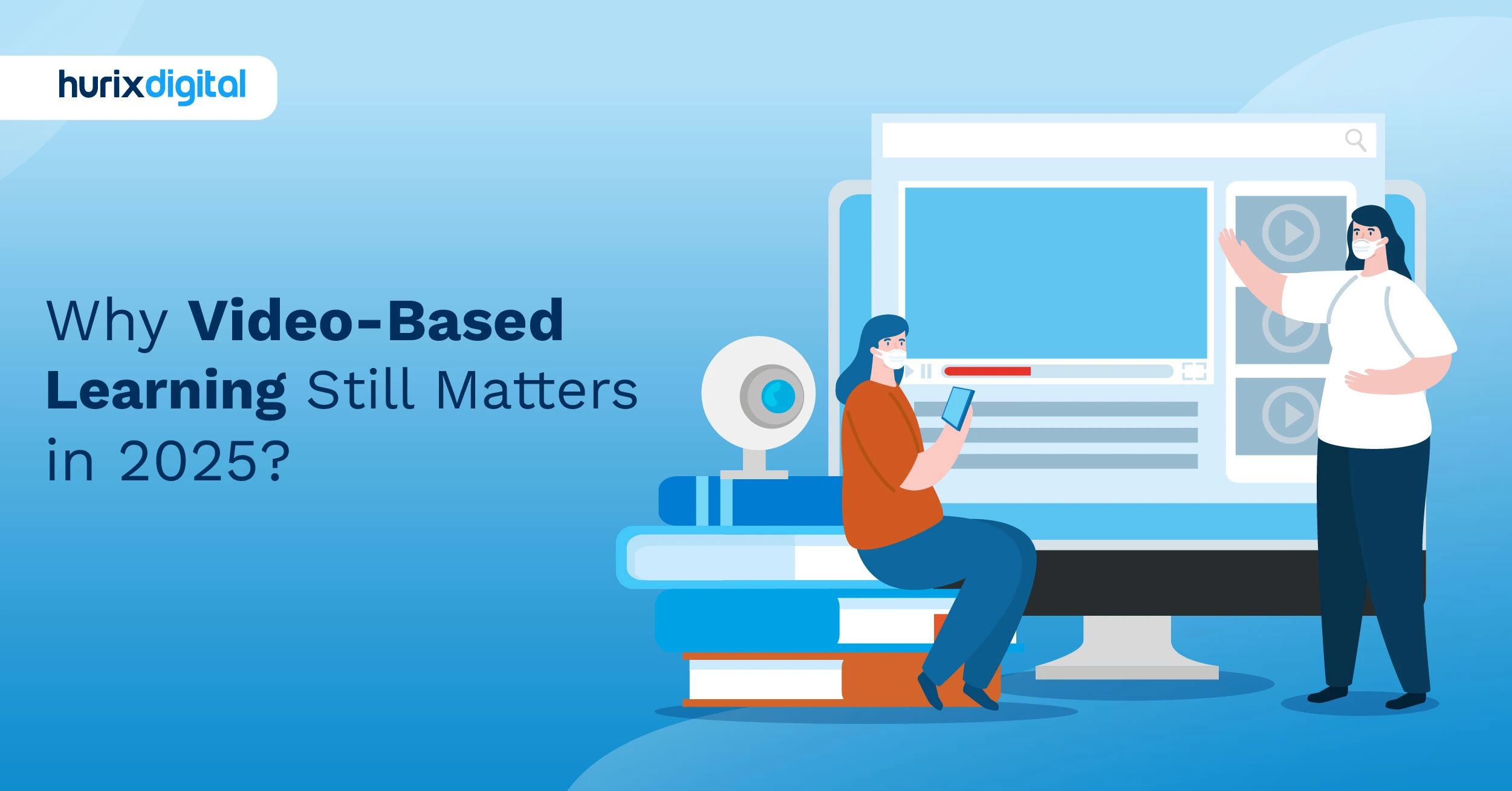
Why Video-Based Learning Still Matters in 2025?
Video-based learning involves watching videos to advance learners’ skills. These materials can be instructional films, tutorials, lectures, or recorded presentations.
Video-based learning can incorporate a range of multimedia resources such as graphics, animations, and interactive exercises, making the learning experience more engaging and interactive.
This method of learning is both flexible and practical, enabling students to access course materials at any time and from any location.
According to a Forrester Research study, people are up to 75% more likely to watch a video than to read a paper or an internet article. On the other hand, research by the SAVO Group found that within just seven days, employees will have forgotten 65% of the information provided in a training session. Nevertheless, retention rates rise by 65% when you deliver these ideas using video.
According to a survey, learners are likely to remember only 10% of textual content, 65% of visual content, and 95% of audiovisual content. So, this kind of instruction efficiently promotes self-learning and keeps students’ interest throughout lessons.
Suffice it to say that video-based learning has become incredibly popular among students all around the world in recent years. In this article, we explore the advantages of video-based learning, making it a popular option for students worldwide.
Table of Contents:
- Various Formats of Video-Based Learning
- Top 5 Reasons Why Video-Based Learning is Better Than Textual Content?
- Advantages of Video-Based Learning
- How Video-Based Learning Works?
- Video-Based Learning vs. Traditional Classroom-Based Learning
- Final Thoughts
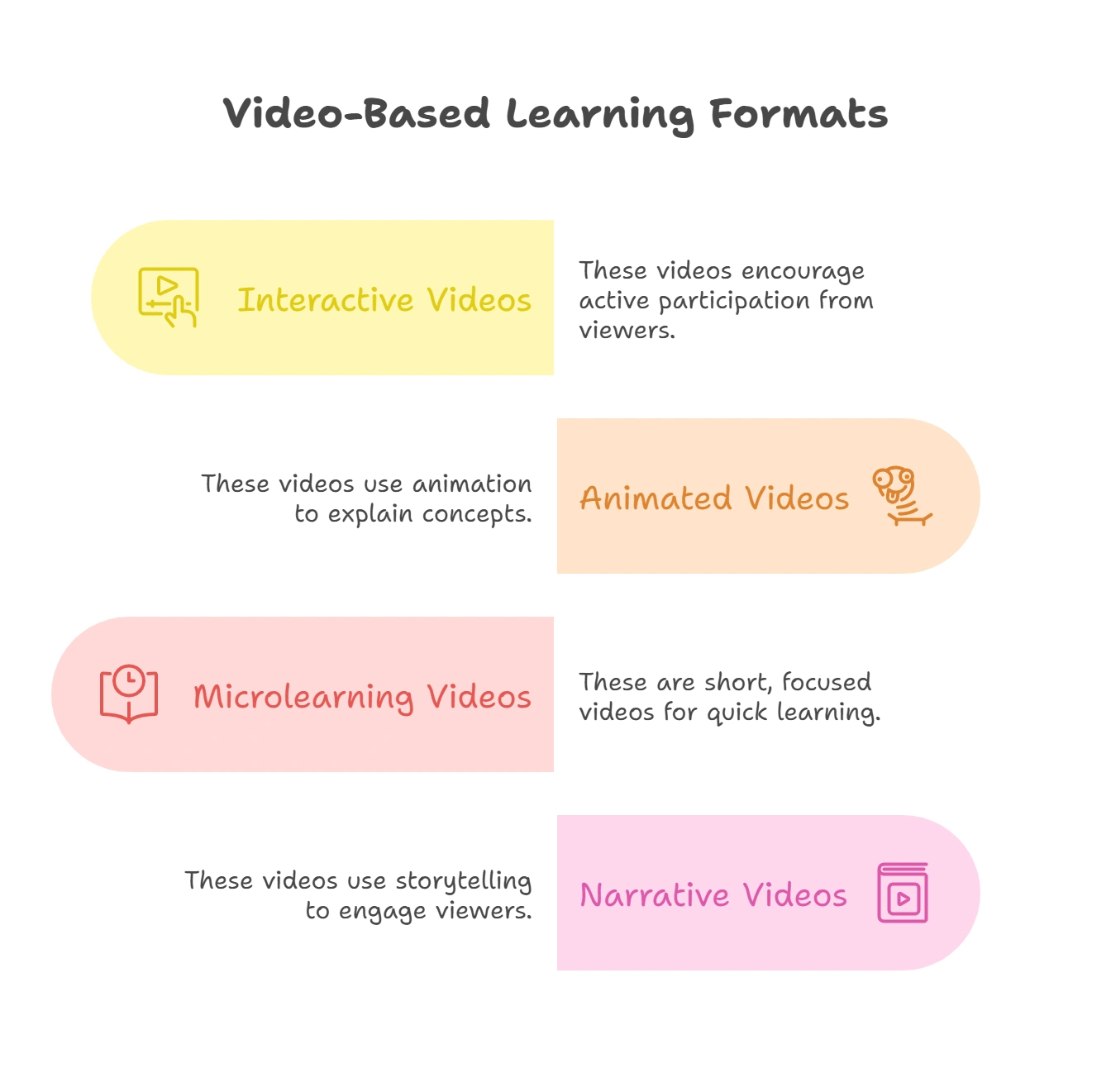
Various Formats of Video-Based Learning
Video-based learning is a multi-disciplinary method that offers exceptional benefits. Here are some examples of video-based learning that you can use in your institution:
1. Interactive Videos
Institutions use interactive videos to create inviting environments to engage students in lessons. Interactive videos induce better retention and learning.
Nobody can remember everything, including courses; thus, interactive videos allow learners to interact with the content via various tools. It also helps learners make decisions depending on their adherence to knowledge.
For instance, many compliance training centers adopt interactive videos where trainers can participate as characters and better understand students’ points of view. Thus, making use of interactive videos is necessary.
Some techniques to make interactive content are annotations, gamification, quizzes, etc.
2. Animated Videos
Animation videos make it easier to learn abstract or complex topics. They allow both visual and practical illustrations of lessons, making it effortless for learners to execute the information.
In such videos, makers draw, design, illustrate, and generate computer effects to make them more engaging and eye-catching.
3. Microlearning Videos
As the name suggests, microlearning videos are short but cover significant concepts. Learners can learn brief information about various concepts in approximately 30 to 60 seconds.
These videos are compelling because they take less time and give the learner information about the most relevant topic. This video-based learning method is also target-based, making it a successful training technique.
4. Narrative Videos
Narrative videos focus on creating a story for the learner so that the learner can make decisions based on the story’s positive and negative outcomes.
However, narrative video-based learning offers a host of voices alongside interactive points for a greater learning experience.
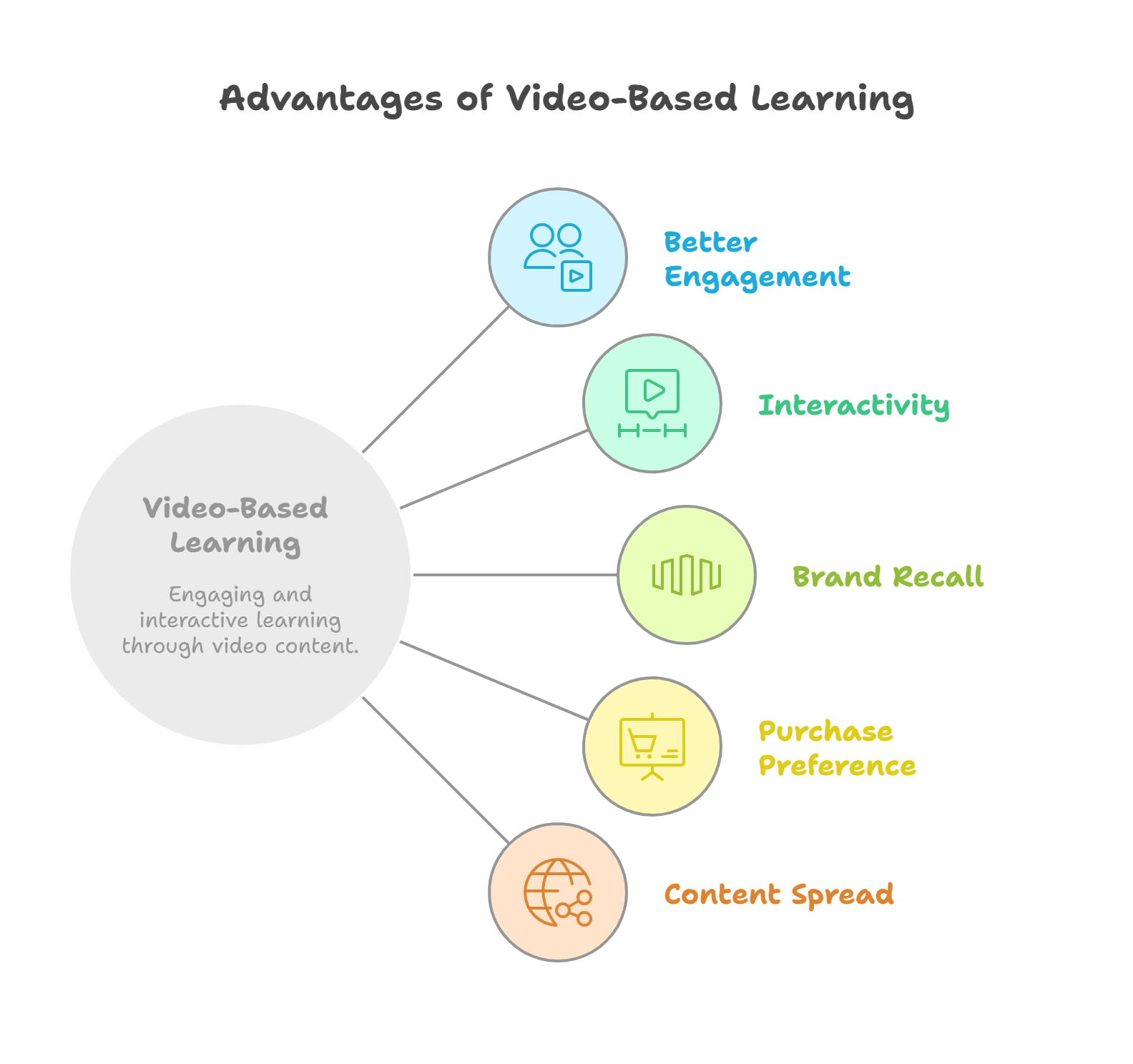
Top 5 Reasons Why Video-Based Learning is Better Than Textual Content?
Videos have seen a massive boom in the past few years, and are slowly becoming the more accepted medium of information sharing. Let’s see 5 reasons why it is better than text:
1. Video-Based Learning Fosters Better Engagement
Video-based learning is better than text when it comes to engagement. Research shows that the human brain can process visuals faster than written text. Since videos combine sound, text, and movement, the audience seems instantly connected to them.
Moreover, when you watch a video, you’re not just passively viewing information but actively participating in the conversation. This makes videos more engaging and easier to follow.
Videos are also excellent storytelling tools. While written text might sometimes seem boring, a video creator can include many interesting graphics to retain the viewer’s attention.
So, if you want to increase the attention span of the people checking your content, invest in video-based learning. They are undeniably an excellent way to captivate and engage your audience, and they’re definitely worth the investment.
2. Videos are More Interactive Than Text
The second reason that makes video-based learning so popular is that the videos are interactive – you can click on different parts of the video to get more information or to follow the conversation. This feature makes videos more interactive and easier to use than text-only content.
For example, if you’re selling a product, videos can show users how to use it or how it works. Similarly, you can use videos to show the practical application of a subject whose theory you plan to teach in your class.
So, if one wants to increase their online presence, videos are a better option than text-based content.
3. Video-Based Learning Improves the Brand Recall
There’s a lot of debate about which format is better – videos or text – when it comes to information reception. But there’s no doubt that videos are more informative and effective than text.
While reading a piece of text, readers often lose track of where it all started. So, they go back to the start to re-read and understand the context. This is known as ‘Regression.’
Since textual content is typically monotonous, it is not hard to lose track of the theme or concept at any time during the reading. Videos, on the other hand, almost entirely eliminate the problem of regression.
Hubspot data shows that 80% of consumers remember the video they watched in the previous month. Can you remember which text ad you saw before reading this article? Probably not, and this is where videos are an exception.
Videos allow you to pack a lot of information in easy-to-understand nuggets. You can also include infographics, charts, or even text to make the video more informative. And when viewers find value in your content, they are more likely to remember your brand for a long time.
4. Everyone Prefers Videos Before Making a Purchase
There’s no doubt that videos are better than text when making a purchase.
Some reasons why videos are preferred are:
- Videos are typically easier to understand than text. That means you’re more likely to decide based on your personal experience rather than on what you’ve read or heard in a text advertisement.
- Also, Forbes stats say that the CTR of videos is approximately 96%, which increases buyers’ chances of getting a product or service.
And that’s why video-based learning is such a powerful marketing tool – it can help you sell products and services more effectively than any other form of marketing. They contribute a lot to increasing sales. For this reason, marketers have started using videos more often in their marketing campaigns.
5. Easy Way to Spread Content to More Users
Finally, video-based learning and information are also easier to share. With just a few clicks, you can share a video on social media or send it as an email attachment.
This makes videos easier to share and more likely to be seen by the people you want to see. The videos are a more shareable choice because:
- It takes no more than a click to share videos with other viewers.
- Videos have the ability to be more engaging than text. This means that if you create a video worthy of being shared, you’re likely to see a lot of traction in terms of engagement and shares.
- In fact, videos are so shareable that some experts believe that videos will eventually overtake text as the most popular form of content online.
So, if one wants to ensure their content reaches as many people as possible, one must make video-based learning a prime part of their marketing or educational strategy. Takeaway: A video is undeniably a powerful tool that helps marketers and trainers in several ways. Video-based learning is better than text because it improves retention, brand recall, and memory.
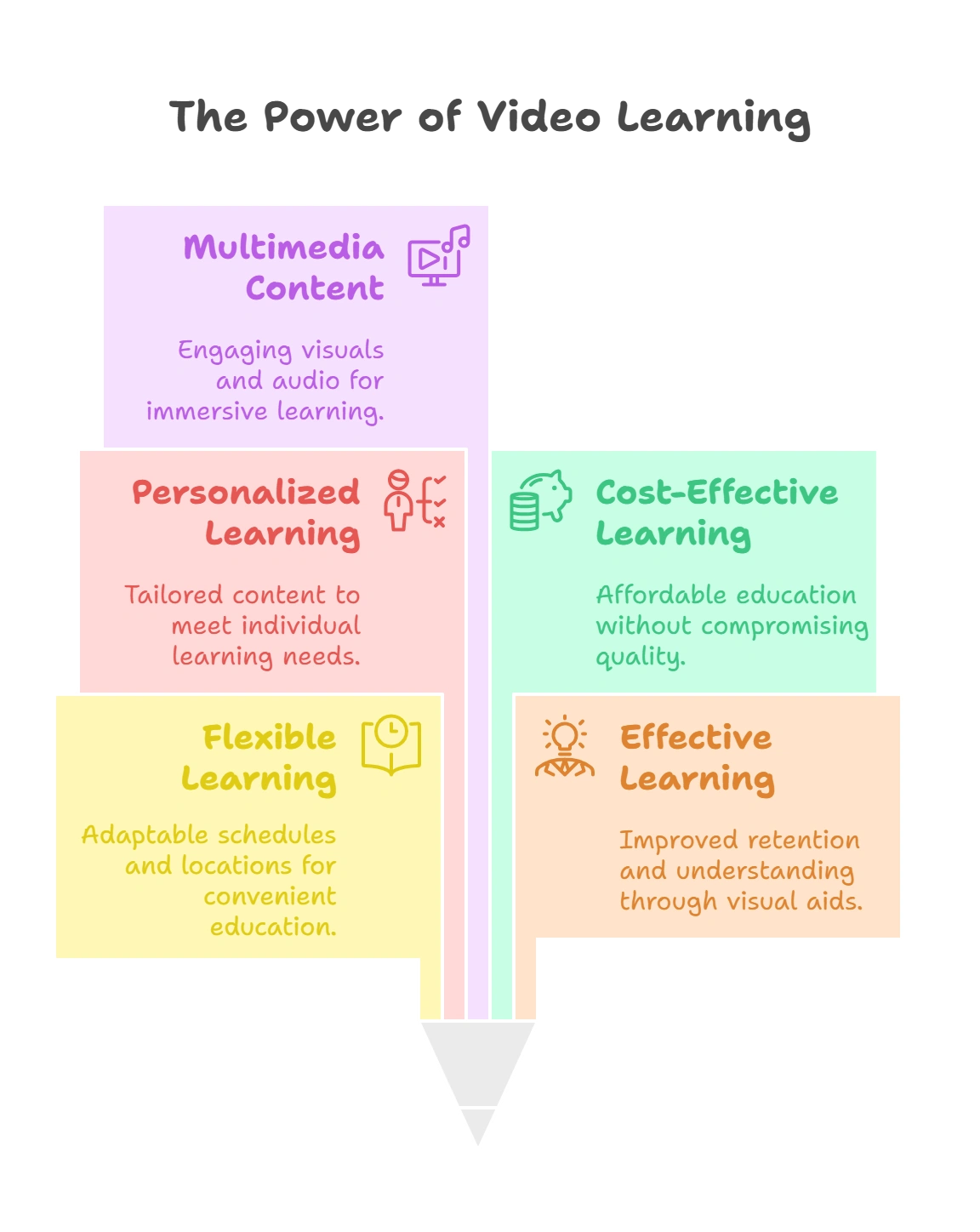
Advantages of Video-Based Learning
Let’s see the advantages of video-based learning:
1. Flexible Learning Opportunities
With video-based learning, students have the freedom to study whenever and wherever they choose. They may use it to access instructional materials from any location, including their homes, offices, and travel destinations.
As video-based learning is neither time nor place-bound, students can fit learning into their hectic schedules. Working professionals and students who must combine job, study, and personal responsibilities would particularly benefit from this flexibility.
2. Effective Learning
Viewing videos might be more efficient than learning in a typical classroom. By using video-based learning, students can pause, rewind, and repeat courses as necessary to ensure understanding.
This strategy ensures that pupils better understand the material, which improves performance and learning retention.
3. Personalized Learning Experience
Through video-based learning, students can personalize their educational experiences. Users have the option to select the knowledge they want to learn, disregard what they already know, and concentrate on the abilities they need to improve.
Learning may be tailored to meet individual requirements and interests thanks to this personalized learning experience.
4. Cost-Effective Learning
Watching instructional videos is frequently less expensive than going to regular classes. It helps students save a lot of money by eliminating the need for actual classrooms, textbooks, and other learning resources.
Due to this, those who want to learn new skills and information without spending a lot of money may choose video-based learning.
5. Multimedia-Rich, Attractive Content
The ability to incorporate a range of multimedia components, such as graphics, animations, and interactive exercises, into videos is only one of its many noteworthy benefits.
The learning process is thereby improved and made more dynamic and interesting. This content’s abundance of multimedia facilitates learning complicated concepts and improves memory retention.
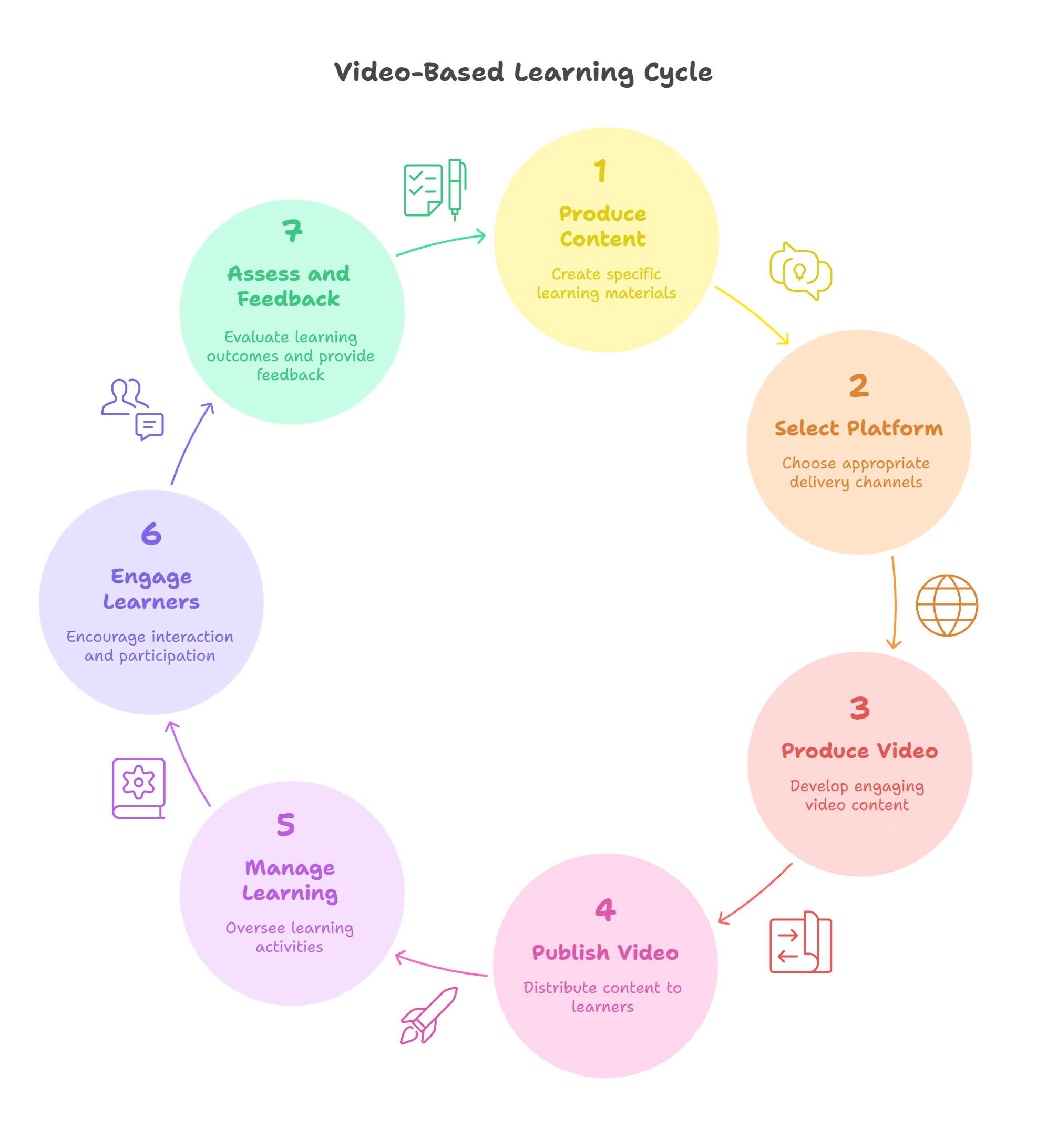
How Video-Based Learning Works?
The following stages are incorporated into the video-based learning procedure:
Step 1: Producing Specific Content
The initial step for video-based learning is to create specific content on a specific topic. The content must benefit the user and address the needs of the engaging audience, whether students, employees, or professionals.
Step 2: Platform Selection
The next step is to choose an appropriate platform for delivering the content after it has been developed.
For video-based learning, numerous platforms are accessible, from specialized eLearning platforms to well-known video-sharing websites like YouTube.
Step 3: Video Production
After choosing a platform, the material is created in video format. The films must be interesting and instructive, with understandable images and sounds.
Step 4: Video Publishing
The videos are then posted to the chosen platform so that learners may view them. To make it simpler for them to navigate and obtain the knowledge they want, the videos might be divided into modules.
Step 5: Learning Management
Learning Management Systems (LMSs) administer the video-based learning process. The LMS may be used to measure engagement, track student progress, and give feedback.
Step 6: Learner Engagement
Students can see the films independently or in groups, at their own pace and leisure. Users may pause the videos, rewind, and repeat certain segments as necessary.
Step 7: Assessment and Feedback
Tests, assignments, and other interactive features can be used to assess students and offer feedback. Learners may get quick feedback on how they performed, which can help them identify areas for improvement.
Overall, video-based learning offers a useful and adaptable approach that can be tailored to each learner’s needs and interests. Students may swiftly and economically acquire new information and abilities using this approach.
Video-Based Learning vs. Traditional Classroom-Based Learning
Here’s a table summarizing some of the key differences between video-based learning and traditional classroom-based learning:
| Aspect | Video-Based Learning | Traditional Classroom-Based Learning |
| Flexibility and Convenience | Learners can access educational material from anywhere and at any time. | Learners must attend classes at specific times and locations. |
| Personalization | Learners have the option of selecting the information they wish to study, skipping over what they already know, and concentrating on their areas of weakness. | Learning is frequently organized around a predetermined curriculum that might not be enough for all students. |
| Interactivity and Engagement | Using multimedia tools like graphics, animations, and interactive activities may make anything interactive and interesting. | Gives students greater chances to engage in interactive and practical learning activities, such as group discussions, debates, and practical tasks. |
| Instructor-Learner Interaction | The most common methods for students and teachers to connect include email, online forums, and video conferencing tools. | Enables one-on-one communication between teachers and students, allowing the latter to ask questions and receive quick responses. |
| Cost | It can be a more economical method of instruction because it does not require physical classrooms, travel expenditures, or other related costs. | Due to the need for resources and physical infrastructure, it could be more expensive. |
Final Thoughts
Video-based learning is adaptable, economical, and enjoyable, so learners gain from it. It also makes learning easier and more accessible by enabling people to access educational content at any time and from any location.
Due to its many benefits, video-based learning is a preferred method of instruction for students worldwide. Are you prepared to integrate videos into your company’s training and development initiatives? Contact Hurix Digital today to schedule a consultation.

Senior Vice President
A Business Development professional with >20 years of experience with strong capability to sell new solutions and develop new markets from scratch. New Market Entry Specialist with experience working in the largest emerging markets. Exceptional experience in conceptualizing, ideating and selling new learning technologies like VR AR, etc. across multiple industry verticals.

